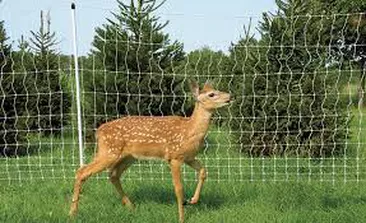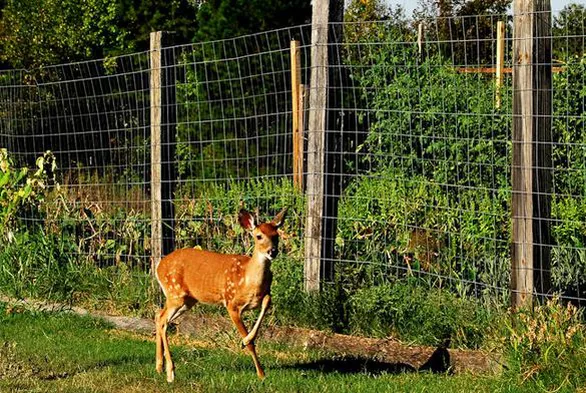If you've tried various forms of sight, sound, taste, and touch repellents for deer, yet still have them feeding on your choice garden plants, perhaps it's time to consider a fence. Just because you have a fence doesn't mean it will be effective at keeping out deer. There are several facts you need to keep in mind when installing such a fence.

Height, or width, is probably the most important factor with deer fences, especially if high deer pressure. White-tailed deer can jump almost eight feet high, so effective upright fences against them should be this high. Deer may be able to jump high, but not both high and over a distance. So a fence may not be as high, perhaps six feet, but slanted outward. The deer will try walking under the fence and meet resistance. Such a slanted fence should be at a 45-degree angle, and may consist of fencing with a few strands of additional wire on top for extra height.

If you have a standard fence about four or five feet feet high, you can add a similar and additional one about four feet away. While not high, with this width deer usually wont like to try and clear both and perhaps get caught between or on them.
Out of sight, out of mind, applies to deer with solid wooden fences, or ones with overlapping slats they can't see through. Such privacy fences are quite effective, as deer can't tell what is on the other side. Even if they can smell what is on the other side, and it's attractive to them, they can't be sure that danger isn't lurking there as well.
Pre:Installation of peach-type fence
Next:Temporary fence base